
Battery-powered in heavy-duty distribution transport – Torsten Schumann drives the eActros
Story
At first he was sceptical, but now he is thoroughly convinced: EDEKA driver Torsten Schumann is one of the first in the world to be driving the fully battery-electric-powered eActros.
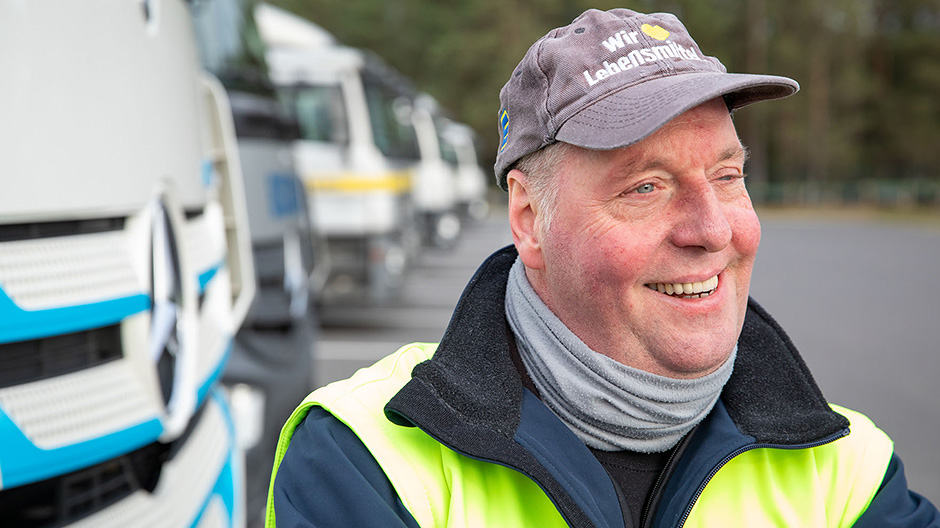
“The crowning experience of my career.”
– Torsten Schumann, known as Schumi, next to
the eActros.
This article contains additional material (videos, images and reports etc.) for registered RoadStars members. In order to experience the article to the full, you need to log in with your RoadStars account or register for one free of charge.
Become a RoadStar and gain access to exclusive content and campaigns!
Login for RoadStars members
Not yet a member? Join RoadStars now
Obtain exclusive access to exciting events and activities which only RoadStars can offer.
Join RoadStarsThe slip road to the A 10 motorway, the Berliner Ring. Both of the 126-kilowatt engines near to the back-axle wheel hubs roar to life, transmitting about 11,000 Newton metres. Without interruption in tractive power, the eActros gathers speed, and 80 km/h is reached in next to no time. Torsten Schumann, who everyone calls Schumi, merges with the traffic. The tyres provide the gentle background noise and the heater makes the cab cosy and warm on this rather cold day.
Comfortable, quiet, locally CO2-neutral.
Schumi beams. “Isn’t it crazy? So comfortable to drive, so quiet inside and out, no exhaust fumes. The crowning experience of my professional life,” says the 52-year-old from Fredersdorf near Berlin. And he really has already seen a lot. First he becomes a toolmaker in an engine production company, then he changes course to work as a driver for a Berlin brewery. With a truck and two trailers he delivers the beer, and his pay is based on performance: a basic wage plus extra for each beer crate. Before he is 20 years old, Schumi is amongst the top earners in the GDR; he starts his own business in 1990 and, in addition to six of his own trucks, hires out drivers as temporary employees. At 50, he yearns for less stress and is hired by EDEKA.
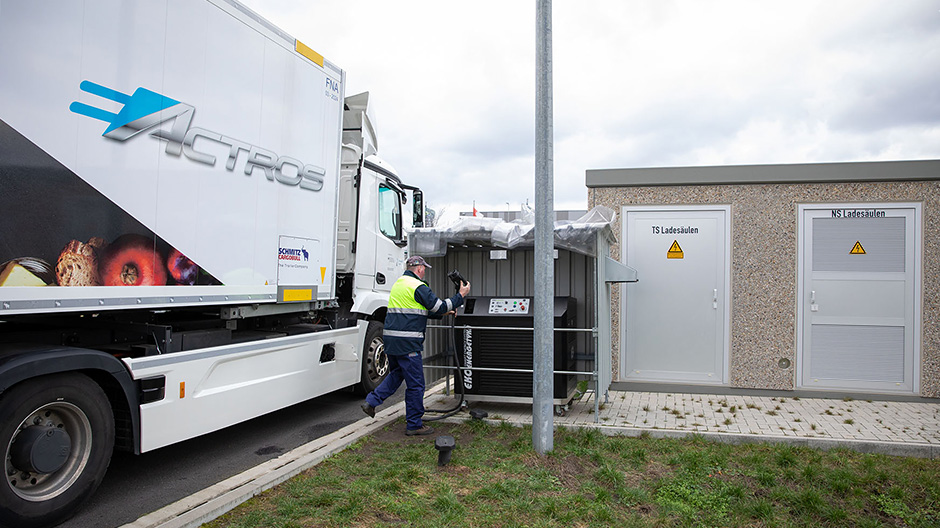
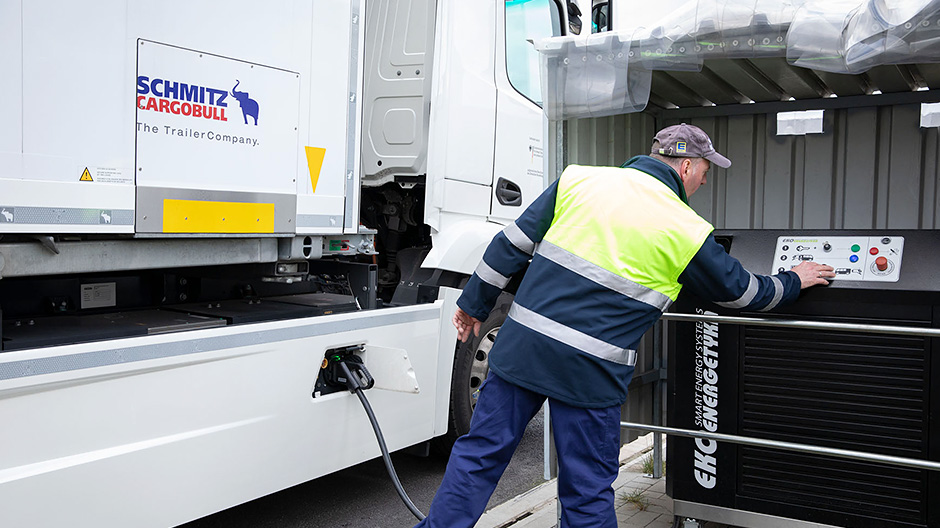
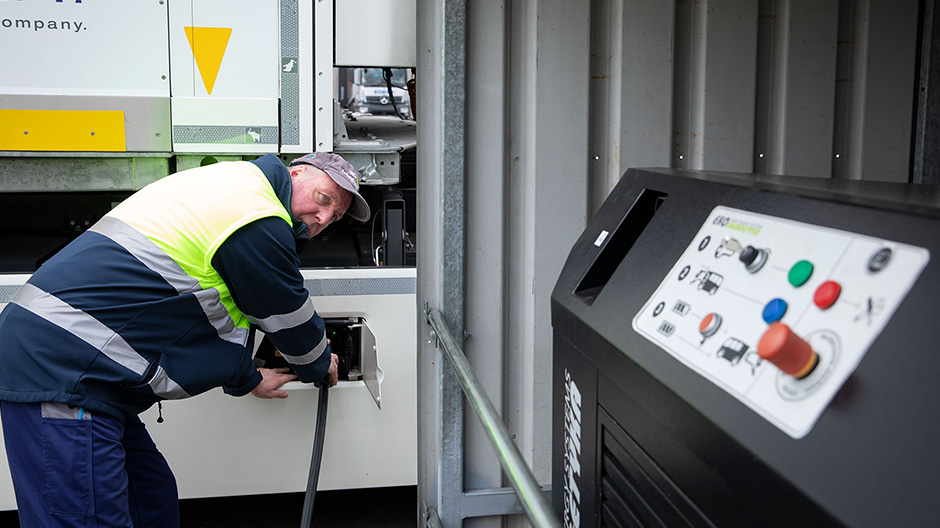
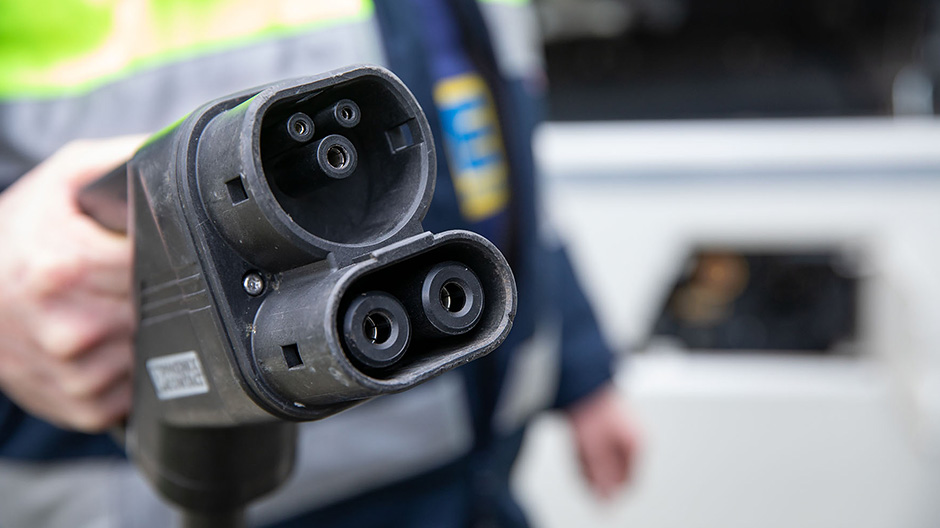
Gathering experience.
He is leaving the motorway at Hellersdorf; so Schumi starts indicating. “At the beginning, of course, there was a lot of uncertainty. How far would we really get?” Gathering experience, testing 18- and 25-tonne trucks under the most varied conditions – that’s what it’s all about with the innovative fleet of Mercedes‑Benz Trucks. Ten battery-electric-powered eActros trucks have been in use for about one and a half years in heavy-duty distribution transport at companies in various sectors, one of which is EDEKA in Grünheide-Freienbrink just outside Berlin.
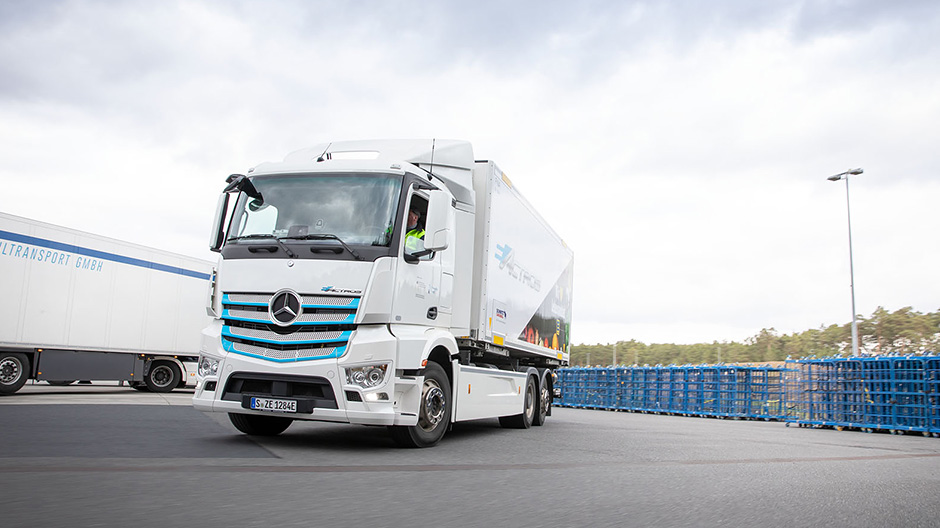
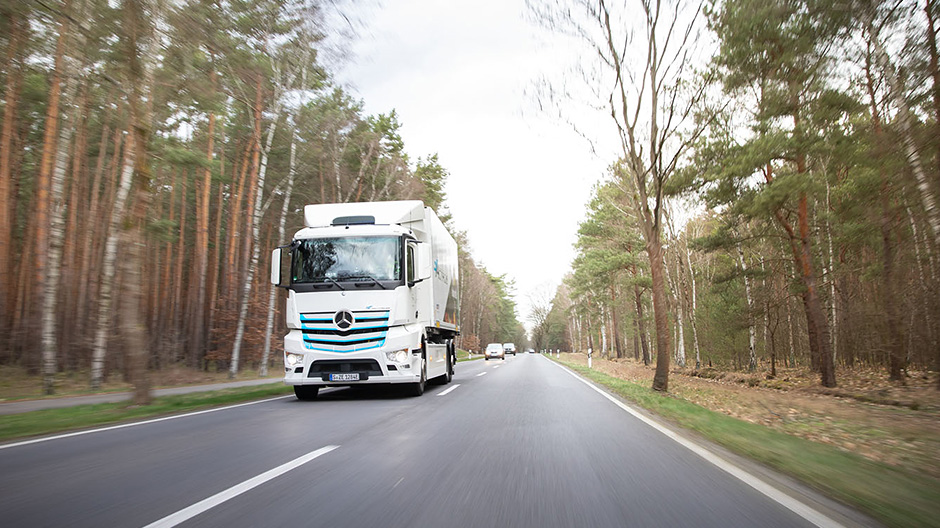
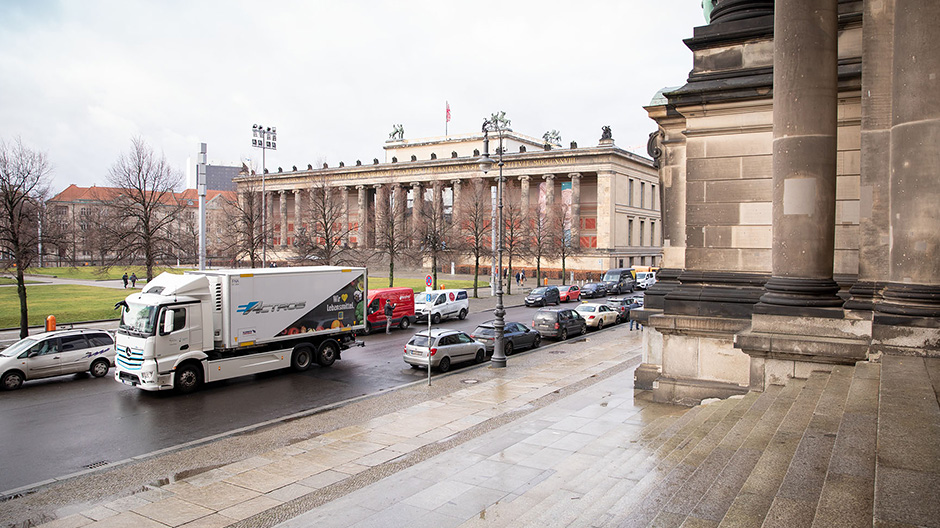
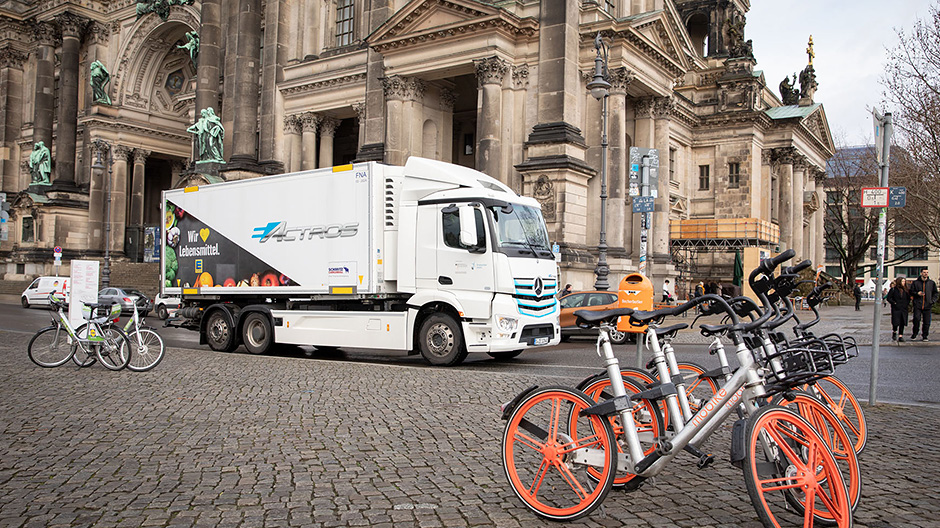
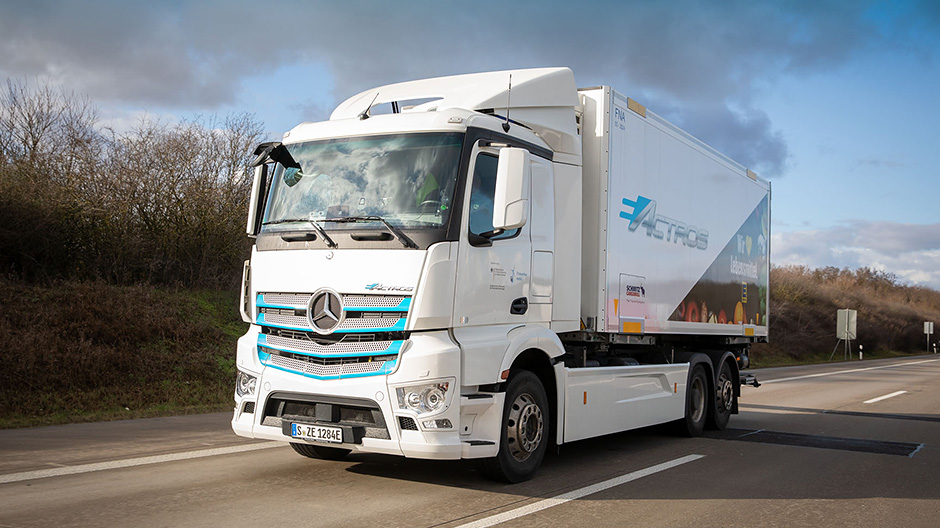
Refrigeration and tail lift.
From here, EDEKA supplies about 500 supermarkets with refrigerated foods. That makes the task for the batteries that much bigger, just like that of the electric tail lift. Together with the Dispatch team, routes are developed, first in smaller radii, then as confidence grows, to destinations further afield. The eActros has never broken down, although the batteries have sometimes been down to the last four per cent. “We now know that a distance of 200 kilometres is generally possible. In good conditions, up to 300 kilometres.”
Operating temperature of the batteries.
Good conditions for battery-electric driving – Schumi explains: “In summer, the batteries quickly reach their 22-degree operating temperature. Then we have to cool the foods. If it is cold, the refrigeration of the cargo area can be dispensed with, but then the heating of the accumulators is necessary. To sum up: taking the knock-on energy consumption into account, the furthest distances can be reached with moderate summer temperatures.”
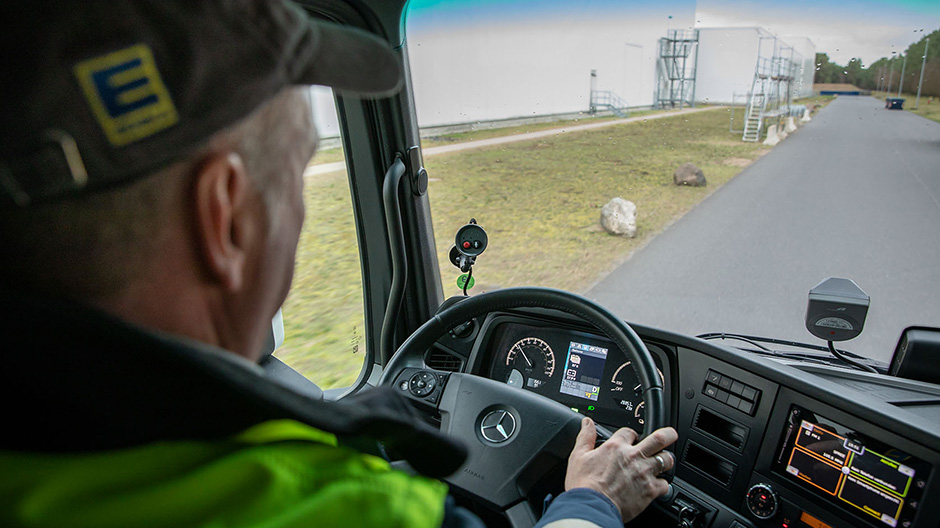
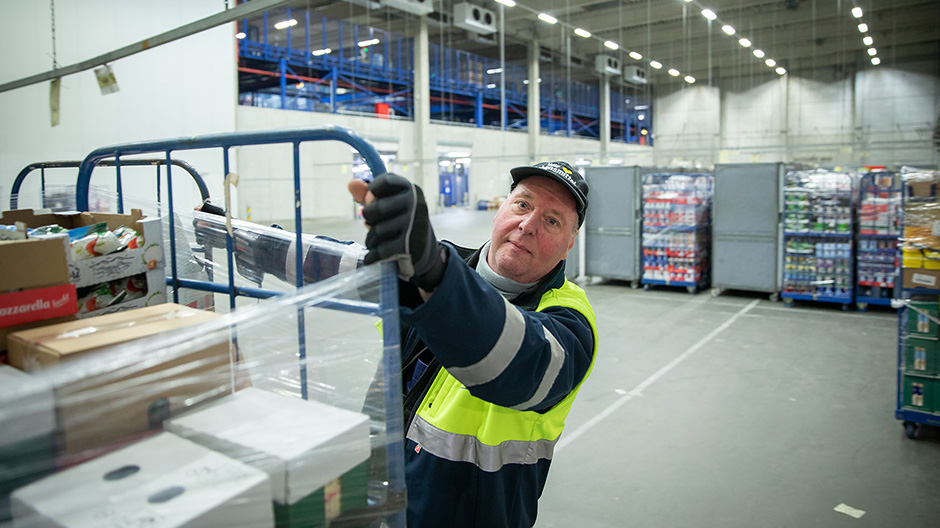
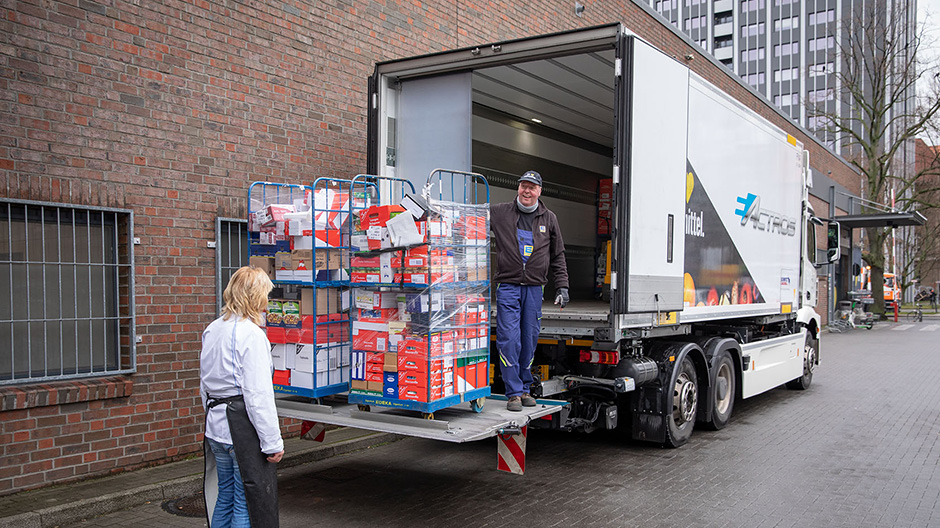
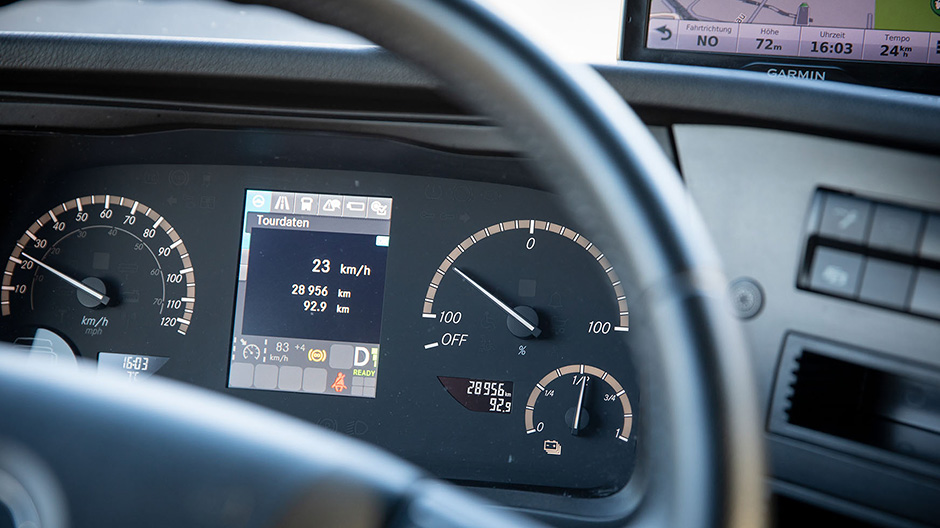
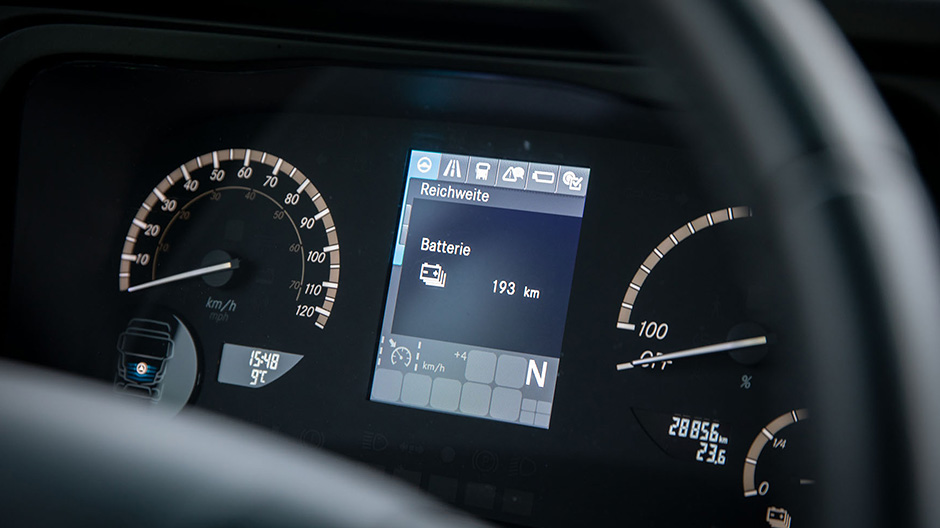
Braking charges the battery.
On the Bundestrasse 1 main road towards Berlin city centre. The eActros hums through the traffic. In the cockpit, the speedometer is on the left, with the central display next to it showing the status of the 240-kilowatt-hour batteries and the distance. On the right is an indicator showing energy consumption, which also shows the energy recovery. For this, the right steering-column lever has the classic function of wear-free braking. “Here I can brake in five steps of various strengths, but the kinetic energy is fully recovered. I am charging the batteries,” says the motor traffic expert.
Manoeuvrable eActros.
Mahlsdorf, Biesdorf, Lichtenberg, then in Friedrichshain onto Frankfurter Allee and Karl-Marx-Allee. Schumi turns left and after a couple of hundred metres turns right into the small car park at the EDEKA supermarket. Thanks to the steered trailing axle, the manoeuvrable eActros is in its element. 25 roller containers fit on the loading area. That means that the tail lift has to be lowered and raised 13 times.
Top-quality truck.
Unloading finished. It’s almost time for the return journey; later the second shift gets under way. The batteries are still charged to 70 per cent and a distance of another 150 kilometres is easily possible on this cool February day with low single-digit temperatures. “I think it’s great. The eActros is a top-quality truck, which can manage up to 300 kilometres with its batteries, depending on what it is being used for. That’s Mercedes for you,” says Schumi, rolling quietly from the yard.
Photos: Sebastian Vollmert
Video: Martin Schneider-Lau




Comment
Please log in to post a comment.
13 comments
darf ich mit Augenzinkern anmerken... der kommt von Hyundai...
Gruß
Klaus
darf ich mit Augenzinkern anmerken... der kommt von Hyundai...
Gruß
Klaus
Gruß Richard
Gruß Richard
Für mich sind E-Fahrzeuge immer noch ein Problem, solange die Batterie-Entsorgung noch nicht genau geklärt ist und die CO2-Bilanz von E-Fahrzeugen immer noch nicht so vielversprechend ist.
Ich lasse mich aber immer gerne eines bessern belehren!
Lasst den Blauen Stern leuchten.
Grüße Jörg 👍👍👍👍👌⛟😎
Für mich sind E-Fahrzeuge immer noch ein Problem, solange die Batterie-Entsorgung noch nicht genau geklärt ist und die CO2-Bilanz von E-Fahrzeugen immer noch nicht so vielversprechend ist.
Ich lasse mich aber immer gerne eines bessern belehren!
Lasst den Blauen Stern leuchten.
Grüße Jörg 👍👍👍👍👌⛟😎
Hoffe, daß ich auch mal einem eActros begegne. In der Region Gaggenau ist einer aktiv, soweit ich weiß.
Der Bericht ist natürlich nur eine Stichprobe. Das Fahrzeug macht aber den Eindruck, sehr nah an der Serie zu sein. Wär' klasse wenn's den bald zu kaufen gäbe und wenn er gekauft würde... bin gespannt.
Gruß
Klaus
Hoffe, daß ich auch mal einem eActros begegne. In der Region Gaggenau ist einer aktiv, soweit ich weiß.
Der Bericht ist natürlich nur eine Stichprobe. Das Fahrzeug macht aber den Eindruck, sehr nah an der Serie zu sein. Wär' klasse wenn's den bald zu kaufen gäbe und wenn er gekauft würde... bin gespannt.
Gruß
Klaus
Und beim eActros habe ich das Gefühl, daß er einen sehr hohen "Reifegrad" haben könnte und damit gar nicht sooo weit in der Zukunft ist...
Damit wäre ein solides Angebot am Markt möglich. Dann liegt es am Kunde, riskiert er 'was? Investiert er 'was?
Und wie entwickelt sich das Umfeld...
Gruß
Klaus
Und beim eActros habe ich das Gefühl, daß er einen sehr hohen "Reifegrad" haben könnte und damit gar nicht sooo weit in der Zukunft ist...
Damit wäre ein solides Angebot am Markt möglich. Dann liegt es am Kunde, riskiert er 'was? Investiert er 'was?
Und wie entwickelt sich das Umfeld...
Gruß
Klaus